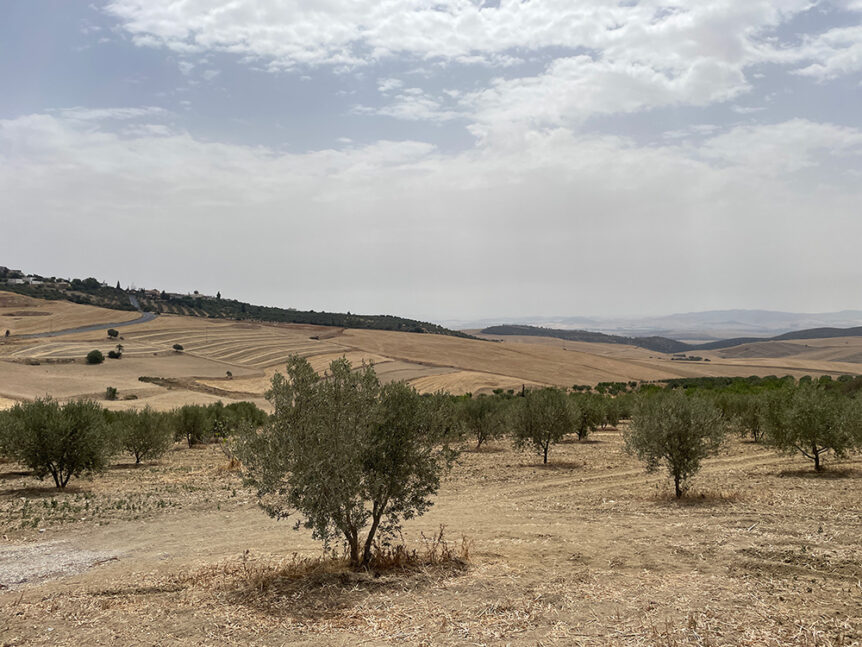I recently had the opportunity to share insights from our work in Tunisia at an event in Brussels about the agroecological transition of food systems in Africa (May 2025). Tunisia is a country where olive trees dominate the landscape, but organic matter is scarce and often overlooked.
One of the most important questions raised during the discussion was, ‘Where do we get organic matter from?’ It’s simple to call for more organic matter in the soil, but we frequently lack the essential materials. Either there is a lack of organic matter, or it is not available in a usable form. Mulching techniques are promoted, for example, but where is the biomass to mulch with? In many cases, it simply isn’t available.

In Tunisia, we have identified three agroecological practices that can help to address this challenge, particularly within olive production systems.
The first is cover cropping. We have found that integrating cover crops is particularly beneficial in standard soils with low fertility. Soil fertility is gradually restored and stabilised over time by cover crops, as opposed to being restored only in the short term. These plants play multiple roles, including protecting the soil, cycling nutrients and contributing biomass when incorporated.
The second practice is the use of compost. However, the effectiveness of composting depends on the level of humidity. Without water, the process becomes ineffective as microbes do not work and nutrients are not released. In arid areas like ours, therefore, applying compost or manure must be combined with good water management; otherwise, it is a wasted effort.
Our third practice is crop diversification. Our data shows that diversification is not about increasing complexity; it is about building resilience and synergy within the same farming system. Different crops can be integrated to allow farmers to make better use of the natural interactions between species. This improves fertility, reduces pests and produces organic matter within the system itself.
Another important issue that arose during the discussion was risk and unpredictability, particularly in the context of climate change. Across many African countries, we are witnessing increasingly chaotic weather patterns: one year is wet, the next is dry, and each year is different. In this context, investing in chemical fertilisers can be risky. In a good year, they might increase yields. But in a bad year, they can create a financial burden that pushes farmers further into vulnerability. In contrast, agroecology builds long-term resilience by improving soil health, moisture retention, and adaptive capacity at farm level.

In Tunisia, 90% of olive cultivation relies on rainfall. This means that our starting point is not a heavily industrialised or input-intensive system. This makes the transition to agroecology more accessible since we are already working with nature. The key problem with these systems isn’t the lack of fertilisers or pesticides, but the limited availability of water and organic matter. Practices such as cover cropping can reduce evaporation, improve soil structure, and increase productivity. Therefore, agroecology is not just a philosophy, but a practical strategy for addressing water scarcity and climate variability.
Finally, I would like to emphasise a point that the other panellists elegantly raised: innovation should build on traditional knowledge. Conventional systems have often replaced older, ecologically sound practices, causing communities to lose their knowledge of how to use them. Agroecology offers an opportunity to innovate and revive these traditional strategies, as well as adapt and promote them.
Hopefully the audience in Brussels will, like I did, come away from this experience with a new understanding of what agroecology is. It’s not just about applying technical solutions. It’s about understanding the complexity of soil, the challenges faced by farmers, and the potential of local ecosystems. Sometimes, we cannot focus solely on feeding the crop. First, we must feed the soil. This sometimes means producing organic matter ourselves in a creative, local and sustainable way.
Author: Dr. Olfa Boussadia, Institut de l’Olivier

